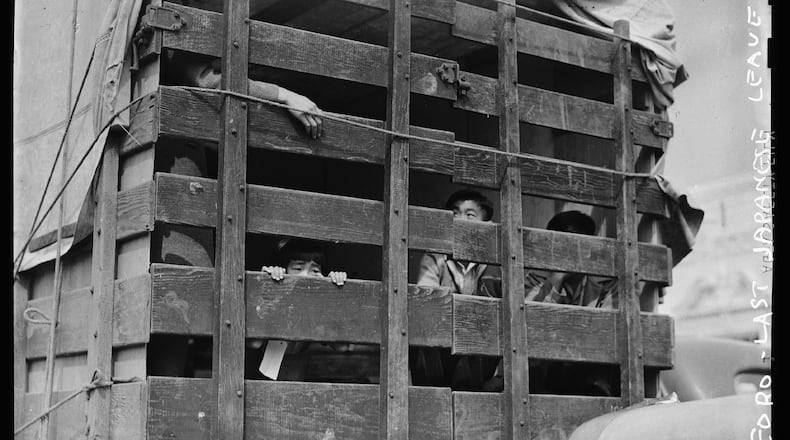Dorothea Lange is known for her Depression-era photos of hard-bitten rural Americans.
She created a lesser-known portfolio of work documenting a shameful chapter in American history, the forced internment of 117,000 Japanese-Americans during the months after Pearl Harbor.
In 1942, she had been hired by the government to photograph the relocation of the American citizens as a way of demonstrating that they had been treated kindly.
"The government wanted a record to show that this had been a humane process and there was nothing for anyone to complain about" Elizabeth Partridge, Lange's biographer, told filmmaker Abby Ginzberg. Ginzberg's new documentary film, to be screened in Atlanta Tuesday, shows the horrendous truth.
Though she was given some restrictions — she was not to show barbed wire or guard towers in the photos — Lange was generally left to her own devices. What she recorded was a deep, quiet sadness. “She had a way of capturing a combination of the despair and the fortitude, the resilience,” said Ginzberg.
The photos that Lange produced were unsatisfactory for the War Relocation Authority’s purposes. “They looked at the pictures and thought ‘this is not necessarily good PR for us,’” said Ginzberg. Most of the photos sat quietly in the National Archives for years afterward.
Then those photos were collected in a book called "Un-American: The Incarceration of Japanese Americans During World War II," by Richard Cahan and Michael Williams.
When Ginzberg, of Berkeley, Calif., was approached by the authors to make a companion documentary film, she was at first uninterested. “I can’t make a movie about a book,” she said.
In 2017, came an executive order and travel ban that heavily affected Muslims. Suddenly the isolation and imprisonment of 117,000 members of an ethnic group had contemporary resonance.
“What’s happening today, with immigration, with refugees, with family separation at the border — I thought I was making a film about American history, but it turned out I was making a film about today’s conflicts,” said Ginzberg.
Her movie, "And Then They Came For Us," made with partner Ken Schneider, demonstrates that anti-Japanese sentiment had been stoked for a while. "It was not just Pearl Harbor," said Ginzberg, 68. "There were years of anti-Japanese sentiment. The seeds had been sown."
The film is narrated by actor George Takei, best known for his turn as Mr. Sulu in the original “Star Trek” television series. “It was a failure of American democracy,” says Takei, whose family was imprisoned when he was five years old, “and yet because most Americans are not aware of that dark chapter of American history, it’s about to be repeated.”
The images show families, their faces set in melancholy patience, dressed in their Sunday best, with suitcases piled around them. “I don’t think they knew where they were going,” said Ginzberg. In Takei’s case, soldiers with fixed bayonets sent them to converted horse stables in Santa Anita Park in Los Angeles.
The barns reeked of manure.
Ginzberg will appear at a screening of “And Then They Came for Us” at Georgia Public Broadcasting headquarters, on Tuesday, along with Edward Mitchell, of the Georgia chapter of CAIR and Phi Nguyen, of Asian Americans Advancing Justice.
Ginzberg will also appear Wednesday and Thursday with Frank Dawson at screenings of another one of her documentaries, "Agents of Change," about the black student protest movement of the late 1960s. It will be shown at the Plaza Theatre and at the Science Auditorium at Spelman College.
IF YOU GO
"And Then They Came for Us." 7 p.m. Tuesday. Free, but RSVP required. Georgia Public Broadcasting, 260 14th St. NW, Atlanta. 404-685-2400, search "And Then They Came For Us" at eventbrite.com.
"Agents of Change." 7 p.m. Wednesday. $18. Plaza Theatre, 1049 Ponce De Leon Ave. NE., Atlanta. 470-225-6503, plazaatlanta.com; also 6:30 p.m. Thursday. Free with RSVP. The Science Auditorium at Spelman College, 350 Spelman Lane, Atlanta. agentsofchangefilm.com.
About the Author
Keep Reading
The Latest
Featured





